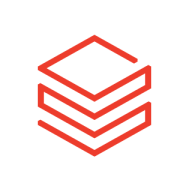

Databricks and Google Cloud Datalab compete in big data analytics. Databricks holds an advantage in pricing and support, while Google Cloud Datalab is noted for its expansive feature set.
Features: Databricks offers seamless integration with Apache Spark, advanced analytics tools, and effective collaboration options. Google Cloud Datalab integrates smoothly with Google Cloud services, simplifies machine learning model development, and provides strong data visualization capabilities.
Room for Improvement: Databricks could enhance user interface aesthetics, offer more extensive API documentation, and improve cross-platform compatibility. Google Cloud Datalab could benefit from optimized resource allocation, reducing initial setup complexities, and enhancing node configuration processes.
Ease of Deployment and Customer Service: Databricks offers flexible deployment and responsive customer service with easy integration on existing platforms. Google Cloud Datalab benefits from scalable deployment within Google Cloud's infrastructure, providing a streamlined setup.
Pricing and ROI: Databricks is cost-effective with a favorable ROI due to efficient resource use. Google Cloud Datalab has higher setup costs but delivers substantial ROI through integration with Google's ecosystem.
| Product | Market Share (%) |
|---|---|
| Databricks | 13.9% |
| Google Cloud Datalab | 1.1% |
| Other | 85.0% |


| Company Size | Count |
|---|---|
| Small Business | 25 |
| Midsize Enterprise | 12 |
| Large Enterprise | 56 |
Databricks is utilized for advanced analytics, big data processing, machine learning models, ETL operations, data engineering, streaming analytics, and integrating multiple data sources.
Organizations leverage Databricks for predictive analysis, data pipelines, data science, and unifying data architectures. It is also used for consulting projects, financial reporting, and creating APIs. Industries like insurance, retail, manufacturing, and pharmaceuticals use Databricks for data management and analytics due to its user-friendly interface, built-in machine learning libraries, support for multiple programming languages, scalability, and fast processing.
What are the key features of Databricks?
What are the benefits or ROI to look for in Databricks reviews?
Databricks is implemented in insurance for risk analysis and claims processing; in retail for customer analytics and inventory management; in manufacturing for predictive maintenance and supply chain optimization; and in pharmaceuticals for drug discovery and patient data analysis. Users value its scalability, machine learning support, collaboration tools, and Delta Lake performance but seek improvements in visualization, pricing, and integration with BI tools.
Cloud Datalab is a powerful interactive tool created to explore, analyze, transform and visualize data and build machine learning models on Google Cloud Platform. It runs on Google Compute Engine and connects to multiple cloud services easily so you can focus on your data science tasks.
We monitor all Data Science Platforms reviews to prevent fraudulent reviews and keep review quality high. We do not post reviews by company employees or direct competitors. We validate each review for authenticity via cross-reference with LinkedIn, and personal follow-up with the reviewer when necessary.